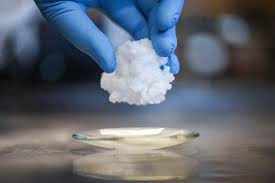- Courses
- GS Full Course 1 Year
- GS Full Course 2 Year
- GS Full Course 3 Year
- GS Full Course Till Selection
- Answer Alpha: Mains 2025 Mentorship
- MEP (Mains Enrichment Programme) Data, Facts
- Essay Target – 150+ Marks
- Online Program
- GS Recorded Course
- Polity
- Geography
- Economy
- Ancient, Medieval and Art & Culture AMAC
- Modern India, Post Independence & World History
- Environment
- Governance
- Science & Technology
- International Relations and Internal Security
- Disaster Management
- Ethics
- NCERT Current Affairs
- Indian Society and Social Issue
- NCERT- Science and Technology
- NCERT - Geography
- NCERT - Ancient History
- NCERT- World History
- NCERT Modern History
- CSAT
- 5 LAYERED ARJUNA Mentorship
- Public Administration Optional
- ABOUT US
- OUR TOPPERS
- TEST SERIES
- FREE STUDY MATERIAL
- VIDEOS
- CONTACT US
Revolutionary Eco-Friendly A/C Technology from the U.K. Lab
Revolutionary Eco-Friendly A/C Technology from the U.K. Lab

Why in the News?
- A U.K.-based laboratory has developed a new solid refrigerant, potentially replacing conventional air conditioning (A/C) systems.
- This technology promises greater energy efficiency, no harmful leaks, and reduced environmental impact.
- Offer a sustainable solution to the growing demand for cooling amid global warming.
What are the Key Highlights?
- Breakthrough Innovation
- Researchers at the University of Cambridge have created a solid, waxy material acting as a refrigerant.
- This material can vary temperature by over 50°C under pressure and does not leak, unlike conventional refrigerants.
- Environmental Benefits
- Solid refrigerants do not contribute to global warming or ozone depletion.
- They could help mitigate the impact of the 2 billion+ A/C units in use globally.
- Underlying Technology
- The solid refrigerant works using the barocaloric effect.
- The barocaloric effect is a physical phenomenon where a material changes its temperature when pressure is applied or removed.
- This happens because the internal structure of the material—usually made up of crystals—rearranges itself under pressure, which causes it to either absorb heat (cooling) or release heat (heating).
- It is similar in function to how traditional refrigerants work but uses solid materials instead of gases, making it cleaner and safer for the environment.
- Industrial Application
- A company called Barocal, which started from research at Cambridge University, is now trying to turn this new technology into a real product that people can use.
- First A/C prototype using this tech has been developed.
- The startup has raised $4.5 million in funding and support from the European Innovation Council and other institutions.
- Expert Opinions
- Prof. Cliff Elwell (University College London) highlights its potential to outperform current gas refrigerants.
- Researchers caution that it's not yet ready for mass or vehicular use.
Gases Used in Air Conditioners at PresentModern air conditioners use refrigerant gases to absorb and release heat for cooling. Some commonly used gases include:
|
Challenges and Way Forward
|
Challenges |
Way Forward |
|
The technology has not been optimised for mass or car use yet. |
Continue R&D to improve efficiency, scalability, and cost-effectiveness. |
|
Requires significant funding and industrial scaling. |
Increase public-private partnerships and government incentives. |
|
Lack of awareness and market readiness for solid refrigerants. |
Launch pilot programs and awareness campaigns showcasing its benefits. |
|
Current refrigerants are well-integrated into global systems. |
Offer incentives for transition, including retro fitting existing systems. |
Conclusion
The development of barocaloric solid refrigerants by the Cambridge team marks a promising leap in clean cooling technology. As climate change accelerates demand for efficient cooling, such innovations could reduce energy usage and eliminate the harmful emissions associated with traditional A/C units. While challenges remain in terms of optimisation and deployment, the pathway to a greener, leak-free future in climate control seems within reach.
|
Ensure IAS Mains Question Q. Discuss the significance of barocaloric solid refrigerants in addressing the environmental challenges posed by conventional air conditioning systems. What are the potential benefits and limitations of this emerging technology? (150 Words) |
|
Ensure IAS Prelims Question: Q. Which of the following statements about barocaloric solid refrigerants is/are correct?
Select the correct answer using the code below
Answer: a Explanation Statement 1 is correct: Barocaloric materials change temperature when pressure is applied or released, due to the barocaloric effect. This property makes them suitable for cooling applications. Statement 2 is correct: These materials are solids, unlike traditional refrigerants which are gases. This solid-state nature reduces the risk of leakage and environmental damage. Statement 3 is incorrect: Barocaloric refrigerants are still under research and development. They are not yet in widespread commercial use in air conditioners. |
|
Also Read |
|
UPSC Foundation Course |
|
| UPSC Monthly Magazine | CSAT Foundation Course |




